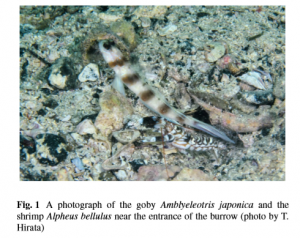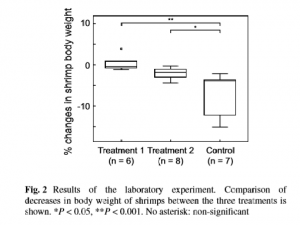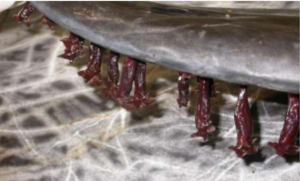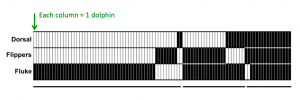Cleaner fishes and shrimp diversity and a re-evaluation of cleaning symbioses
By Shannon Moorhead, SRC Masters Student
If you’ve ever gone diving on a tropical coral reef, you may have noticed some of the fish seemed to be behaving rather strangely: a solitary fish hovering just above the reef while smaller fish pick at its skin and mouth. While this may appear bizarre compared to the other creatures zipping about the reef, this is a common behavior in the animal kingdom known as cleaning symbiosis. Cleaning symbiosis occurs when, after brief communication between the animals involved, a cleaner animal removes harmful materials from a client animal of a different species. This is a mutually beneficial act for both the cleaner and the client: the client is ridded of parasites and dead skin while the cleaner gets an easy meal!
![A pair of Hawaiian cleaner wrasse clean a dragon wrasse. [Source: Wikimedia Commons, photo by Brocken Inaglory (https://commons.wikimedia.org/wiki/File:Cleaning_station_konan.jpg)]](https://sharkresearch.rsmas.miami.edu/wp-content/uploads/2017/03/Figure-1-Cleaning-Symbiosis-300x225.jpg)
A pair of Hawaiian cleaner wrasse clean a dragon wrasse. [Source: Wikimedia Commons, photo by Brocken Inaglory (https://commons.wikimedia.org/wiki/File:Cleaning_station_konan.jpg)]
Interspecific communication between cleaner and client is a key aspect of cleaning symbiosis. Acts of assertion or submission, by client or cleaner or both, are the catalysts that initiate the cleaning process. Often, cleaners will perform a “dance” or touch the client to signal their intention to clean; the willing client then submits and poses itself in a way that indicates its acceptance of the cleaning. While visual cues are important to this process, in some cases tactile stimulation is just as, if not more important. By approaching and touching the client, cleaner fish make it clear that they are not prey items, as prey would not directly approach a potential predator. Cleaning interactions between cleaner shrimp and moray eels, who have poor vision and are primarily nocturnal, are most likely initiated solely by tactile stimulation. Shrimp have been observed touching eels with their antennae and legs, followed by morays submitting and opening their mouth, allowing the shrimp to begin cleaning.
![A shrimp cleans inside the mouth of a moray eel.[Source: Wikimedia Commons, photo by Steve Childs (https://commons.wikimedia.org/wiki/File:Moray_Eel_and_Cleaner_Shrimp.jpg)]](https://sharkresearch.rsmas.miami.edu/wp-content/uploads/2017/03/Figure-2-Cleaning-Symbiosis-300x225.jpg)
A shrimp cleans inside the mouth of a moray eel.[Source: Wikimedia Commons, photo by Steve Childs (https://commons.wikimedia.org/wiki/File:Moray_Eel_and_Cleaner_Shrimp.jpg)]
Though it is well known that the removal of ectoparasites is beneficial for the health of fishes, the ecological balance maintained by cleaner organisms is poorly understood. Many studies have attempted to quantify loss of reef fish abundance and diversity after the removal of one or multiple species of cleaners from a reef, with varying results. Some studies reported little change in the number of fish, while others reported drastic differences in the number and diversity of fish observed, as well as increases in the number of lesions on remaining fish. The large diversity and abundance of cleaners in marine ecosystems suggest they perform a critical ecological function; the discrepancies among study results make it clear that more research must be done to fully understand the intricacies and significance of cleaning symbiosis.
Works cited
Vaughn DB, Grutter AS, Costello MJ, Hutson KS (2016). Cleaner fishes and shrimp diversity and a re-evaluation of cleaning symbiosis. Fish and Fisheries: 1-19. Doi: 10.1111/faf.12198




